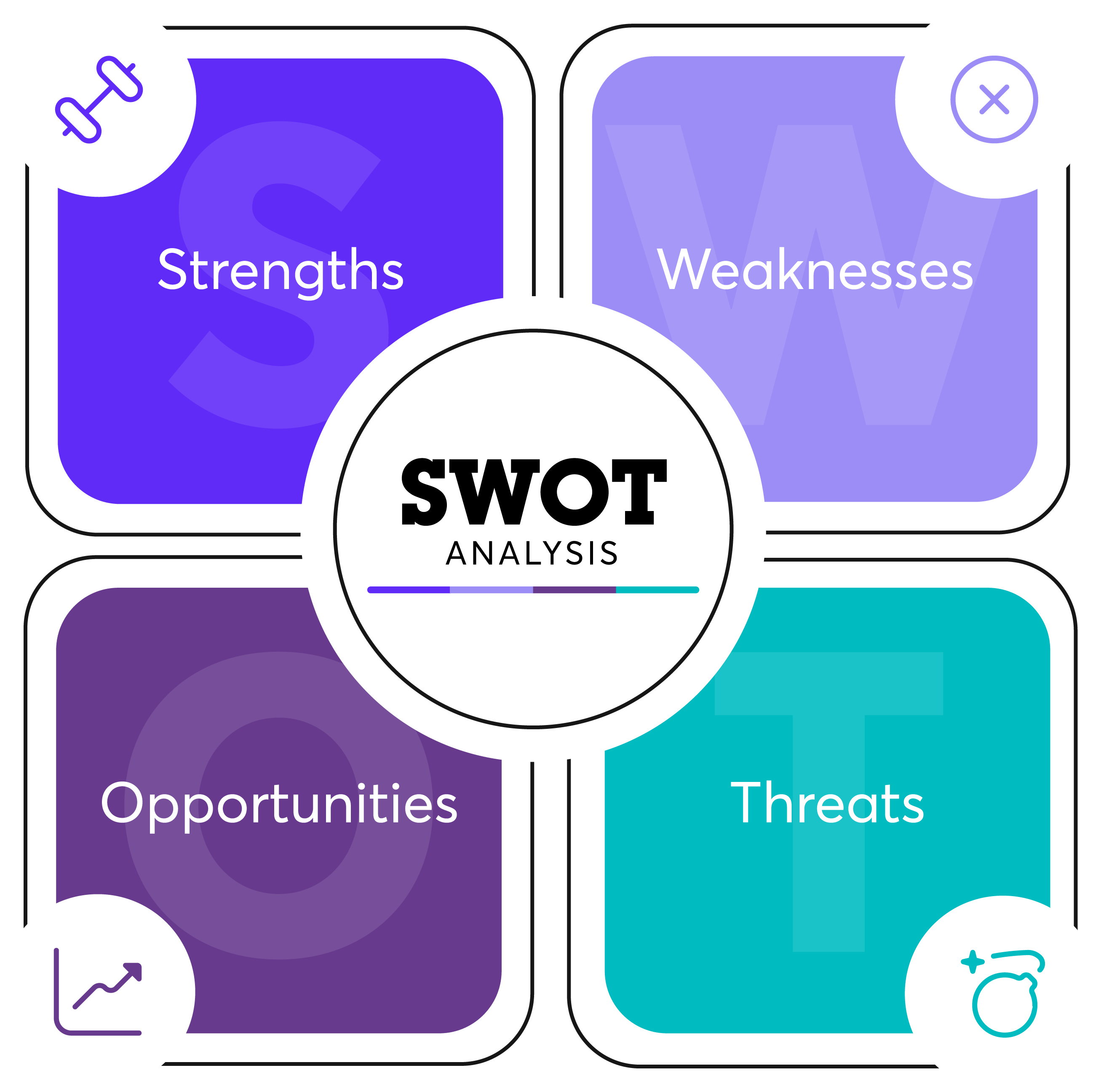The Role of SWOT Analysis in Strategic Business Development
 In the competitive world of business, strategic planning is the cornerstone of success, especially for startups and SMEs. Whether a company is in its early stages or experiencing growth, having a clear and focused strategy is essential for long-term sustainability. One of the most powerful tools for developing such a strategy is the SWOT analysis, which helps businesses identify their Strengths, Weaknesses, Opportunities, and Threats. For small and medium enterprises (SMEs), using SWOT analysis can uncover crucial insights, set priorities, and guide decision-making processes.
In the competitive world of business, strategic planning is the cornerstone of success, especially for startups and SMEs. Whether a company is in its early stages or experiencing growth, having a clear and focused strategy is essential for long-term sustainability. One of the most powerful tools for developing such a strategy is the SWOT analysis, which helps businesses identify their Strengths, Weaknesses, Opportunities, and Threats. For small and medium enterprises (SMEs), using SWOT analysis can uncover crucial insights, set priorities, and guide decision-making processes.
Understanding SWOT Analysis
SWOT analysis is a structured planning tool used to evaluate a company’s internal and external factors. By identifying strengths, weaknesses, opportunities, and threats, businesses can develop strategies that play to their advantages while mitigating risks. Here’s a breakdown of the components:
– Strengths: What does your business do well? These could be internal resources, capabilities, or qualities that give your company a competitive edge.
– Weaknesses: What are the areas where your business could improve? Identifying weaknesses allows you to develop strategies to overcome or minimize them.
– Opportunities: What external factors could your business take advantage of? These could be trends in the market, new technologies, or changing customer preferences.
– Threats: What external risks could harm your business? Competitors, market changes, and economic downturns could all pose threats to your business.
How SWOT Analysis Benefits Startups and SMEs
For startups and SMEs, SWOT analysis is critical for several reasons:
1. Focus on Core Strengths: Many startups struggle to focus on their key competencies. A SWOT analysis allows businesses to identify their strengths and capitalize on them. For example, a small company may excel in personalized customer service—this strength can be emphasized in their marketing efforts to stand out from larger competitors.
2. Addressing Weaknesses: Most small businesses operate with limited resources, which can lead to gaps in skills, processes, or technology. Identifying weaknesses through SWOT helps SMEs develop strategies to either fix these issues or find ways to work around them. For instance, if a startup lacks a robust IT infrastructure, it may decide to outsource that function rather than invest in expensive in-house technology.
3. Tapping into Opportunities: Startups often fail because they don’t react to external opportunities fast enough. SWOT analysis helps businesses remain vigilant about trends in the market. Whether it’s adopting new technologies, diversifying their product line, or entering a new market segment, recognizing opportunities allows SMEs to innovate and grow.
4. Mitigating Threats: The business landscape can change rapidly, with threats arising from new competitors, regulation changes, or economic downturns. By regularly conducting SWOT analysis, businesses can stay ahead of potential threats and develop contingency plans. For example, if a new competitor enters the market, a company may adjust its pricing strategy or invest in better customer service to retain clients.
Common Pain Areas for Startups and SMEs
Many small businesses and startups face similar challenges when it comes to strategic development:
1. Lack of Clear Vision: Without a clear roadmap, many businesses struggle to align their operations with long-term goals, leading to disjointed efforts.
2. Limited Resources: Most SMEs operate on tight budgets, which restricts their ability to invest in new technologies, hire specialized talent, or expand into new markets.
3. Inadequate Market Research: Startups often lack the data or insights needed to understand their target market fully, leading to poorly defined strategies.
4. Competitive Pressure: New businesses face stiff competition, and without a solid strategy to differentiate themselves, they can quickly lose ground to more established players.
5. Risk Management: SMEs may not have the experience or systems in place to anticipate or handle risks, leaving them vulnerable to disruptions.
How APKA Industries Can Help
At APKA Industries, we understand the unique challenges that startups and SMEs face. Through our Business Strategy Development services, we help companies conduct comprehensive SWOT analyses to identify their strengths, weaknesses, opportunities, and threats. Our team of expert consultants works closely with businesses to create actionable strategies tailored to their specific needs.
Here’s how we address your pain points:
– Clarifying Vision: We help businesses define their long-term objectives and ensure that every action aligns with these goals.
– Resource Allocation: Our consultants provide guidance on how to make the most of limited resources, whether it’s by adopting new technologies or streamlining operations.
– Market Research & Insights: We provide businesses with the market intelligence they need to make informed decisions and seize opportunities.
– Competitive Strategy: We develop customized strategies to help businesses stand out in a crowded marketplace.
– Risk Mitigation: Our team helps businesses anticipate risks and develop robust contingency plans to navigate challenges.
By using SWOT analysis as a foundation for strategic planning, APKA Industries ensures that your business is prepared for growth, resilient in the face of challenges, and focused on long-term success.
Conclusion
Every business, regardless of size, needs a solid strategy for long-term growth. For startups and SMEs, SWOT analysis offers a powerful framework for understanding both internal and external factors that impact success. With the help of APKA Industries, your business can leverage its strengths, address weaknesses, seize opportunities, and guard against threats. Let us guide you toward sustainable growth with our expert Business Strategy Development services.

